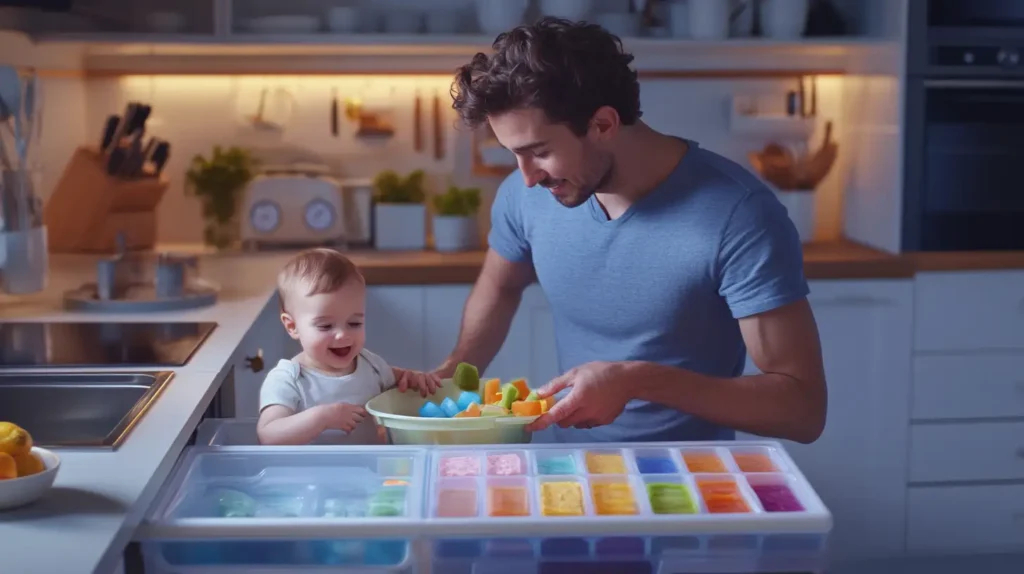Table of Contents
ToggleUnlock Your Time: The Baby Food Freezer System That Changed Everything
Have you ever felt that sinking feeling when your baby is hungry, crying at full volume, and you’re scrambling to prepare something nutritious while operating on three hours of sleep? Maybe you’ve found yourself ordering takeout (again) because the thought of cooking separate meals for your baby and the rest of the family feels impossible. Or perhaps you’re staring at that expensive organic baby food jar, calculating how quickly your budget is disappearing with each tiny spoonful.
This used to be my daily reality. And I’m going to share something with you that I really wish someone had told me sooner.
When my daughter was born, I had this beautiful vision of being that parent who effortlessly whips up fresh, nutritious baby food daily. But between sleepless nights, work deadlines, and just trying to maintain basic hygiene (dry shampoo became my best friend), that vision quickly collapsed into a mountain of store-bought pouches and guilt.
Then everything changed. Not because I suddenly found more hours in the day or developed superhuman parent powers. It changed because I stopped trying to be perfect and started being strategic.
The baby food freezer system I developed didn’t just save my sanity—it transformed how I approached parenthood. Because here’s the truth: the way to nourish your baby isn’t by sacrificing your well-being on the altar of parental perfection. It’s about working smarter, not harder.
So give me a few minutes, and I’ll show you how to delete your mealtime stress while creating nutritious, homemade baby food in bulk that would make even my Caribbean grandmother proud.

Why Most Parents Abandon Homemade Baby Food (And Why You Don’t Have To)
Let’s be honest about something first. The biggest mistake that most parents make isn’t lack of good intentions. It’s believing that making baby food needs to be a daily commitment—that fresh is best means made this morning or nothing at all.
I remember talking to my friend Simone over coffee. Her eyes were heavy with exhaustion as she confessed she’d given up on homemade baby food after just two weeks. I just can’t keep up, she said. Between work and everything else, I don’t have time to steam and purée vegetables every single day.
And you know what? She was right. She didn’t have time. None of us do.
The more desperately we try to be that perfect parent who does it all, the less sustainable our good habits become. Just like that job interview where wanting it too badly makes you nervous and awkward, or that relationship where trying too hard pushes the other person away—caring too much about perfection can actually lead to abandoning good practices altogether.
What if instead, we embraced the with or without energy? The confidence that comes from knowing you’re moving forward regardless of whether every single meal is Instagram-worthy? When you detach from perfection and embrace strategic meal planning, that’s when the magic happens.
Back in my grandmother’s kitchen in Trinidad, she never made just one meal at a time. Sunday cooking meant preparing bases for multiple meals that would transform throughout the week. That wisdom wasn’t just traditional—it was incredibly practical.
You become calmer. You become more present. And ironically, that’s when your baby actually gets better nutrition consistently—because your system is sustainable.
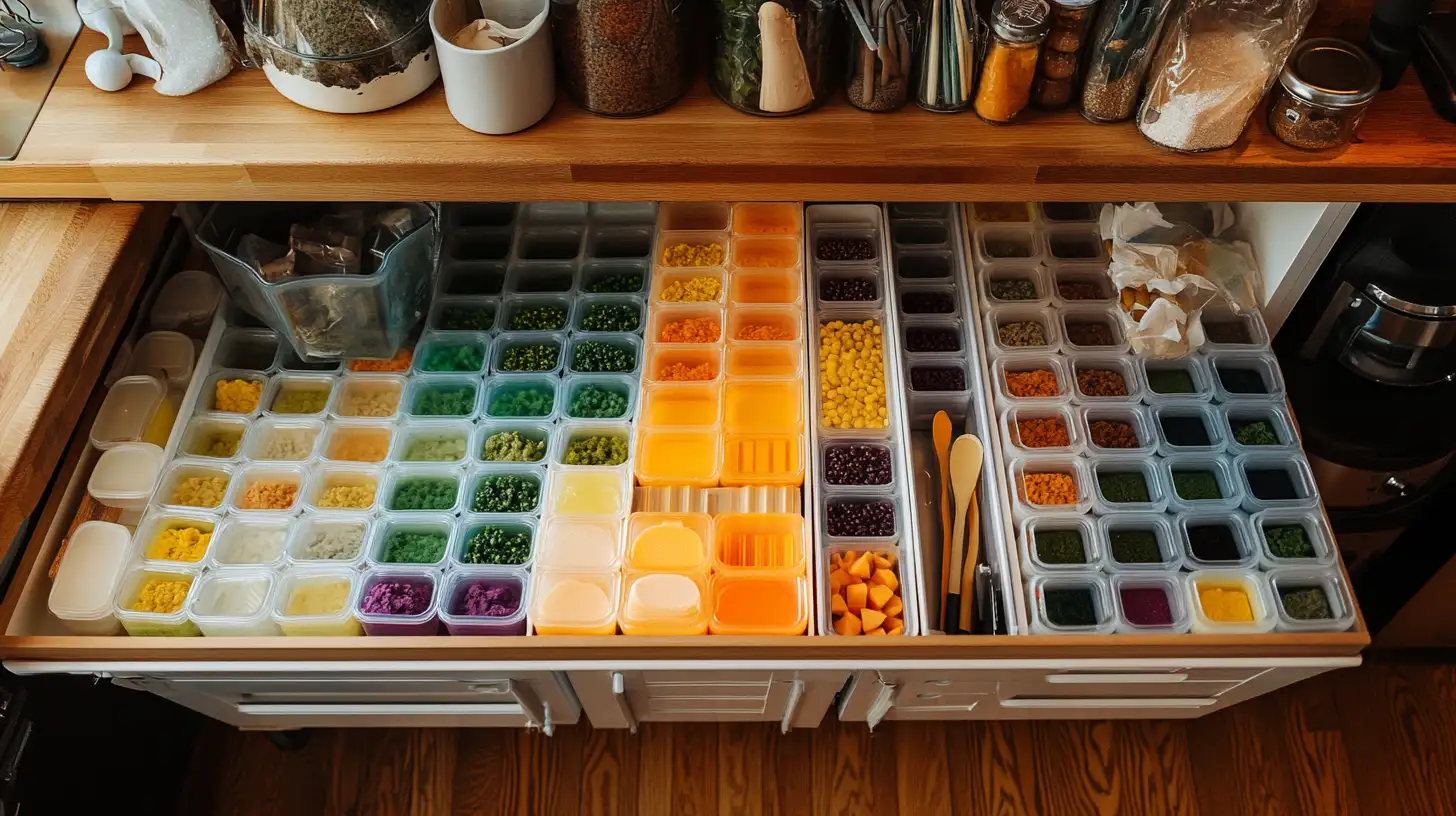
The Foundation: Setting Up Your Baby Food Command Center
Before we jump into the food preparation itself, let’s talk about creating the right environment. Your baby food command center doesn’t require a kitchen renovation or fancy equipment. It just needs thoughtful organization.
When I first started, I had gadgets everywhere—special baby food makers, fancy storage containers, specialized freezer trays. It was chaos disguised as preparation. Now I know better. Simplicity is power.
Here’s what you actually need:
- A reliable blender or food processor (the one you already own is probably perfect)
- Ice cube trays (silicone ones with lids are ideal, but regular ice trays work too)
- Freezer-safe containers or bags (glass containers or silicone reusable bags are my preference)
- Masking tape and a marker for labeling
- A dedicated freezer shelf or bin
The key is creating a system where everything has its place. In my kitchen, the bottom left drawer became baby food central—it holds my ice cube trays, labels, and portion containers. The bottom freezer shelf is exclusively for frozen baby food cubes, organized by food type.
This organization isn’t about being fancy—it’s about removing barriers. When your system is clear, you’re more likely to use it. When everything has a home, bulk preparation becomes effortless rather than overwhelming.
One Saturday evening, after my daughter went to sleep, I transformed our kitchen into this organized baby food command center. Nothing fancy, nothing expensive—just purposeful. And the next morning, instead of the usual weekend chaos, I felt a strange calm. Like I had finally claimed control over something in this wild parenting journey.
That feeling of I’ve got this is worth more than any high-end baby food system money can buy. Because when you stop overthinking the process and simply create a dedicated space that works, you’ve already won half the battle.
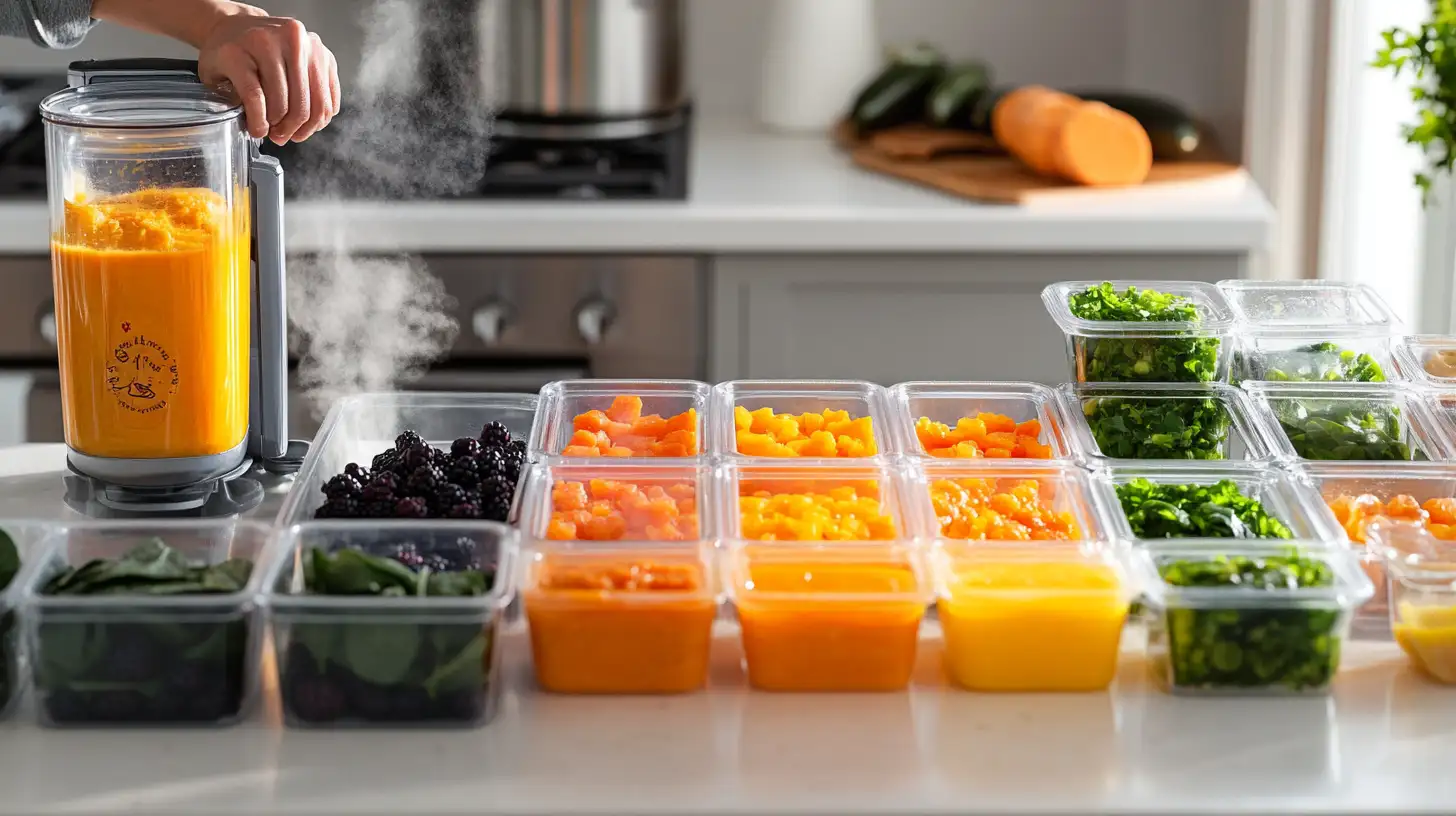
The Power Hour: Transforming Whole Foods into Freezer Gold
Now let’s talk about the actual preparation process. I call it The Power Hour, though realistically, it might be 90 minutes of your time. Once every two weeks. That’s it.
I used to think I needed to prepare fresh baby food daily. Now I realize that was like saying I needed to bake fresh bread for every sandwich. Unnecessary perfectionism that leads to burnout.
Here’s my Power Hour process:
- Select 4-5 vegetables and 2-3 fruits (seasonal and varied colors)
- Prep them all at once (wash, peel if necessary, chop into similar sizes)
- Cook using the same method where possible (steaming preserves nutrients best)
- Blend in batches, adjusting thickness with cooking water
- Pour into ice cube trays (each cube is roughly 1 ounce—perfect for portion control)
- Label with contents and date
- Freeze overnight, then transfer cubes to labeled storage containers or bags
What transformed this process for me was embracing what I call the base and flavor principle. This is something my grandmother used to do with her cooking, though she never called it that.
I prepare several neutral bases—sweet potato, butternut squash, quinoa, oatmeal—then create flavor cubes from foods with stronger flavors—spinach, broccoli, mango, spices like cinnamon or mild curry. By freezing these separately, I can mix and match at mealtime for endless combinations that introduce my baby to varied flavors while maintaining a balanced diet.
One evening, exhausted after work, I grabbed a sweet potato cube, a spinach cube, and a pinch of mild curry powder. Two minutes in the microwave later, my daughter was happily eating a nutritious meal that I would have never had the energy to make from scratch that day. Meanwhile, I had time to sit down and actually enjoy watching her explore these flavors.
That moment of connection—rather than frantic cooking while she cried—was possible because I’d detached from the daily grind and embraced the power of preparation. I’d given my best effort on meal prep day, and now I was free to just be present.
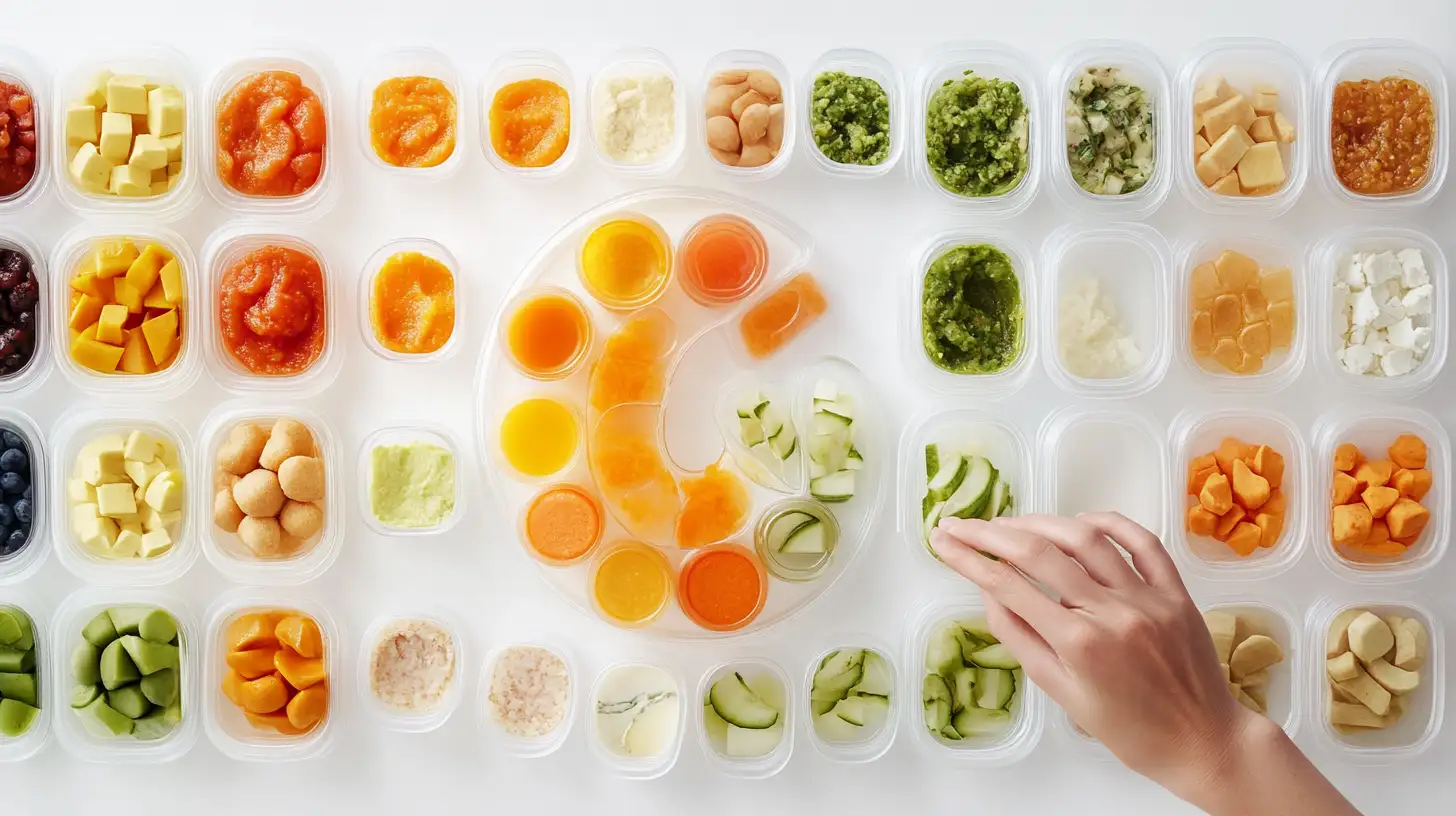
Beyond Purées: Growing Your System with Your Baby
Here’s something that trapped me at first—thinking that baby food was just about smooth purées. I created this elaborate system for the early months, only to abandon it when my daughter started showing interest in finger foods.
This doesn’t have to happen. Your freezer system should evolve as your baby grows.
For babies 4-6 months: Focus on single-ingredient purées frozen in small portions. This helps identify potential allergies and introduces basic flavors.
For babies 6-9 months: Create combination purées with multiple ingredients and varying textures. Freeze in slightly larger portions as appetite increases.
For babies 9-12 months: Prepare chunkier blends, soft finger foods, and deconstructed family meals portioned for baby. Freeze mini meatballs, bean patties, and soft vegetable chunks on trays before transferring to containers.
For toddlers 12+ months: Freeze complete mini-meals that can be quickly thawed—like portions of mild curry with rice, pasta with vegetable sauce, or breakfast oat cups with fruit.
What I wish I’d known sooner was that most of our regular family meals could be adapted for the baby freezer system. When making dinner, I now portion out ingredients before adding salt or spicy seasonings. Some goes directly into baby-sized portions for the freezer.
This integration was a game-changer. No more separate cooking sessions just for baby food. My daughter’s freezer stash became an extension of our family meal planning rather than a separate project.
I remember my cousin visiting from Jamaica and watching me prepare our family dinner while simultaneously stocking my daughter’s freezer supply. She smiled and said, You’re cooking smart, not hard—just like our grandmothers did. That validation felt better than any parenting book approval ever could.
When you embrace your progress as a parent versus trying to achieve a perfect result, you create systems that actually work for real life. And a system that adapts as your child grows means you’re not constantly starting over—you’re building on what already works.
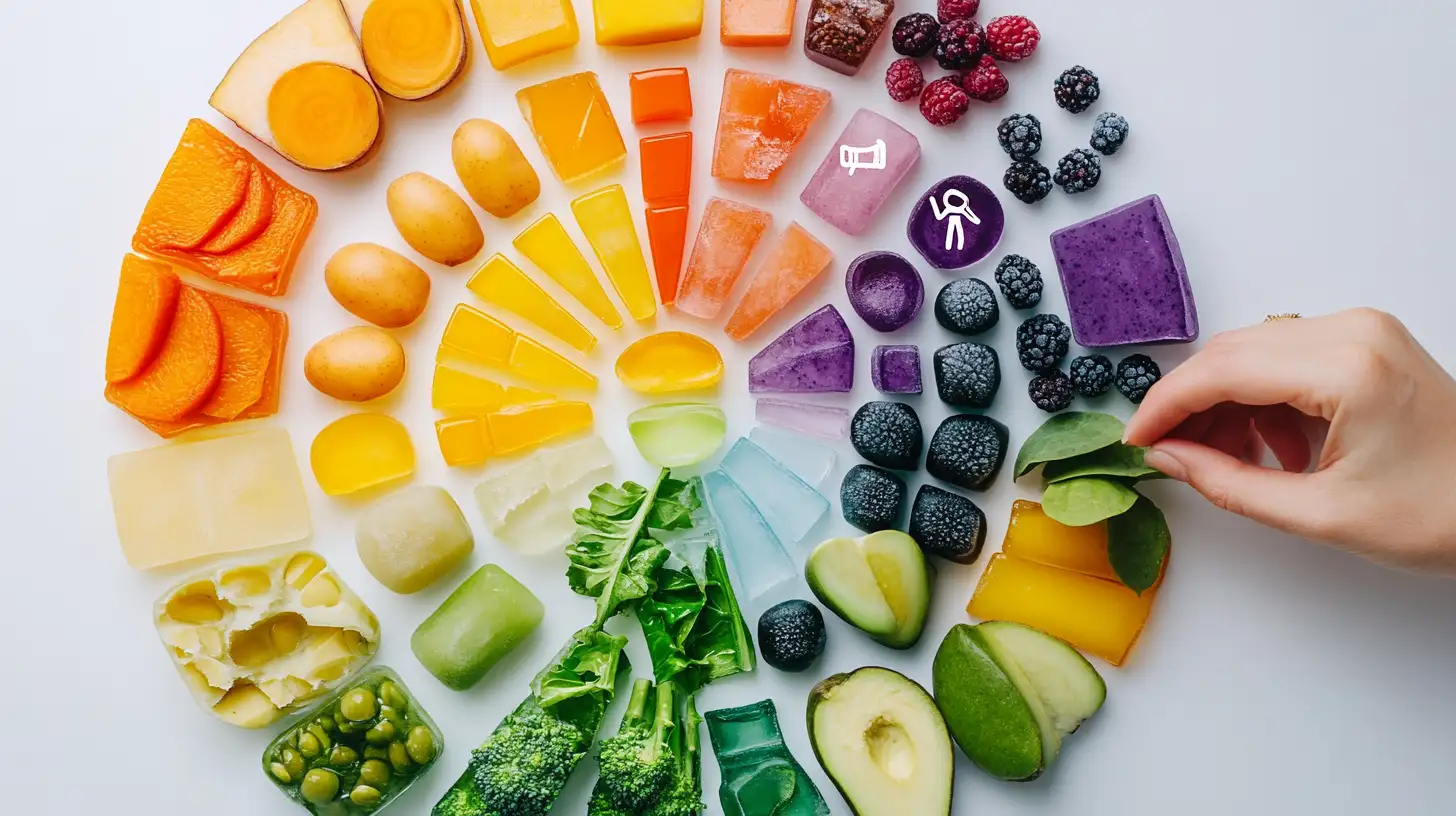
The Nutritional Blueprint: Balancing Quality and Convenience
Let’s talk about the elephant in the freezer—nutrition. Because isn’t that why we’re doing this in the first place?
I used to worry that frozen baby food couldn’t possibly be as nutritious as fresh. Then I learned something surprising: properly frozen foods often retain more nutrients than fresh produce that’s been sitting in your refrigerator for days.
The key is in how you prepare and freeze the food:
- Minimize water exposure (steam rather than boil when possible)
- Cool quickly before freezing (prevents ice crystals that damage cell walls)
- Store in airtight containers (prevents freezer burn)
- Use within 1-3 months for optimal flavor and nutrition
What I’ve learned to do is create what I call nutrition clusters—ensuring each two-week prep session includes:
- Orange/yellow foods (for vitamin A and carotenoids)
- Green foods (for iron, folate and other minerals)
- Purple/blue foods (for antioxidants)
- High-protein options (legumes, mild fish, poultry, or meat if introduced)
- Healthy fat sources (avocado, olive oil, full-fat yogurt)
By thinking in these clusters rather than individual recipes, I ensure my daughter gets a balanced diet even on the busiest days. When I pull food from the freezer, I typically grab from at least two different color categories.
One Sunday afternoon, my mother-in-law watched me prepare my daughter’s food in this systematic way. At first, she was skeptical—her generation made everything fresh daily. But then she noticed how this approach actually ensured more variety in my daughter’s diet than daily cooking would allow.
You know, she said, this reminds me of how we preserved seasonal harvests back home. Different method, same wisdom.
And she was right. The freezer system isn’t about cutting corners—it’s about capturing peak nutrition and making it accessible every day, regardless of your schedule. It’s about working with nature’s abundance rather than fighting against life’s limitations.
When you release the idea that best means made today and embrace that best actually means consistently nutritious, you free yourself to create a truly sustainable approach to feeding your baby.
Your New Freedom: Beyond the Baby Food System
Now let’s talk about the real magic of this system—what it gives back to you.
The irony of spending a Power Hour on baby food preparation is that it actually creates more time than it consumes. Those fractured 15-minute daily cooking sessions add up to far more time (and mental energy) than one focused bulk preparation session.
But this system does more than save time. It deletes the mental load of daily decision-making. No more standing exhausted in front of the refrigerator wondering what to feed your baby. No more guilt about reaching for a packaged option because you simply cannot face cooking again today.
This freedom extends beyond mealtimes. When your baby’s nutrition is systematized, you gain back mental space for other things—connection, play, rest, or whatever you need most.
I remember the exact moment I realized this system had changed more than just how I feed my daughter. We were at the park on a Wednesday afternoon. My baby was happily exploring the grass while I actually sat down—fully present, not anxiously checking the time knowing I needed to rush home to prepare dinner. Her meal was already handled—simple, nutritious, waiting in the freezer. And in that moment, I felt something rare: parental peace.
The baby food freezer system isn’t really about food at all. It’s about creating space for what matters most. It’s about understanding that when you put in your best effort strategically, then detach from perfectionism, life works in your favor.
If the system works perfectly every time, great. If not—if you occasionally reach for a store-bought option or order takeout—you know it’s just one meal in a broader pattern of good nutrition. Either way, you’re going to be okay. I promise.
The best parents I know care deeply about their children’s nutrition, but they aren’t attached to every meal being perfect. They show up, they give their best in the ways that matter most, and then they let go.
Because they know if they’ve created a system that works for real life—not just for Instagram—they’ve already won. And so have you.
Your First Step Forward
Now, whenever you’re reading this, I want you to have the courage to start small. You don’t need to implement the entire system at once.
This weekend, try preparing just two vegetables and one fruit. Freeze them in portions. Experience how it feels to have those ready-to-go options available.
When you stop caring about getting everything perfect and start embracing progress over perfection, you become powerful. When you build systems rather than chase daily achievements, you become unstoppable.
Remember this: If you’ve given this system your best shot, if you’ve tried it fully, then regardless of the outcome, you’ve already taken a huge step toward more peaceful parenting. The result isn’t just better nutrition for your baby—it’s better wellbeing for you.
And ultimately, that might be the most nourishing ingredient of all.
- Picky Eating Prevention: Foundations in the First Year - October 17, 2025
- The Great Nursing Strike: Causes and Solutions - October 7, 2025
- DIY Baby Food: Equipment-Free Approaches - October 1, 2025

